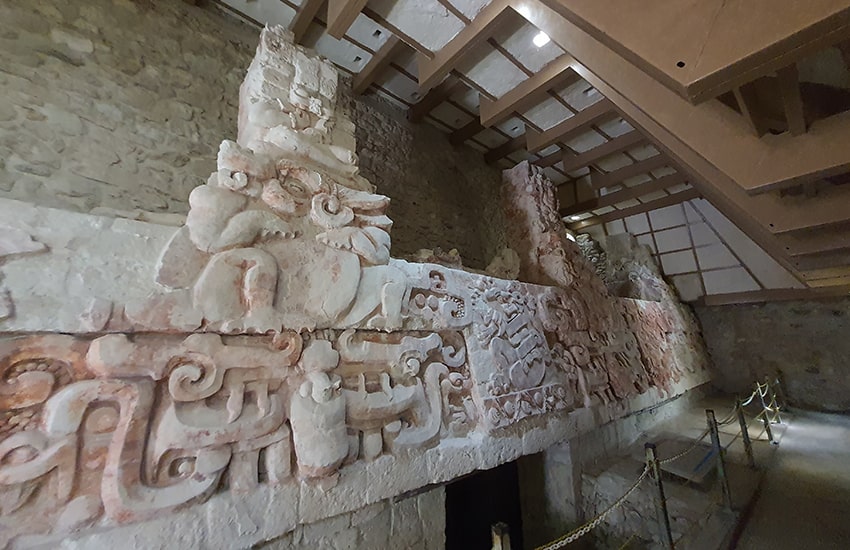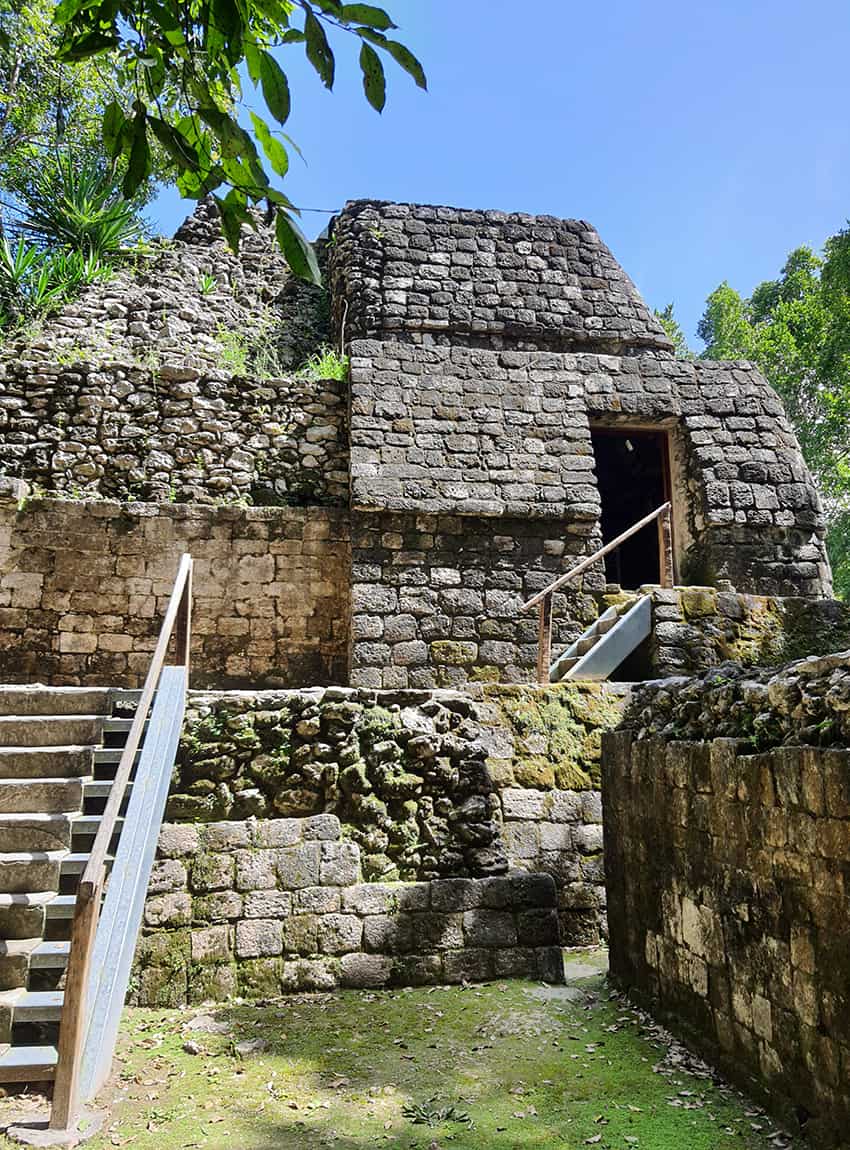The archaeological zone of Balamku in the state of Campeche holds one of the largest and perhaps the most beautiful surviving stucco friezes from the ancient Maya world.
Situated 245 kilometers from Campeche city, off Highway 186, the site is hidden in the jungles and attracts few visitors. On our trip, we had the site to ourselves.
Balamku is near the famous Bat Volcano — a cave that houses millions of bats — and is also close to other ancient Maya sites, including Calakmul.
Discovered only in 1990 by archaeologist Florentino García Cruz when investigating a looting complaint, Balamku is Yucatec Mayan for jaguar temple — so named for the jaguar featured on its frieze. It is commonly known today as the Temple of the Jaguar.
Balamku is thought to have been occupied from 600 B.C. to A.D. 1000. In its early days, the city was influenced by Maya cities in the Petén — the northern Guatemalan region bordering Mexico and Belize — such as Tikal, El Mirador and Calakmul.

Post A.D. 600, it displayed similarities to Becán — the Maya capital of the Río Bec region. Ancient architecture enthusiasts can observe different building styles here.
The archaeological zone is relatively small, extending to only one square kilometer, with three main groups of buildings. There is a small museum at the entrance, as well as helpful historic information notices from The National Institute of Anthropology and History (INAH) on the site.
The lush green and tranquil surroundings make exploring the buildings a pleasant experience, especially in the summer heat of Campeche. Climbing structures is generally allowed.
West of the entrance is the South Group with 13 structures built around four plazas. This area is thought to have been occupied from around 300 B.C, but ceramics from 600–300 B.C. have been discovered here. The most significant structures were built during A.D. 300–600 before the site was abandoned around A.D. 1000.
Remains of incense burners from A.D. 1200–1500 were also discovered here, indicating rituals carried out later, and so this section is thought to have been reoccupied briefly around A.D. 1200.
The group’s main pyramid, which has a temple on top, measures around 10 meters in height. Two elite tombs were discovered here. Southeast of the main pyramid is an elite residential building constructed on a platform with a bench inside. The northern section of the group, identified as residential buildings, is also worth seeing.

Balamku’s main area — called the Central Group — has an entrance through a beautiful arch from the south. This area has about 30 buildings, mostly monumental, situated around three plazas. Archaeologists have still only explored around one plaza.
Northwest is the Structure I pyramid, and perhaps Balamku’s most significant building, where the famous polychrome stucco frieze was discovered. It’s a long building of three pyramids joined together, with a possible astronomical purpose, and a temple on top.
The west pyramid is the oldest of the three. The substructure of the west pyramid, considered a palace, holds the frieze. You can enter this building from the west.
You will be mesmerized by this well-preserved frieze that measures 16.6 meters long and around 4.3 meters in combined height. Created during A.D. 550–650, it was initially exposed due to the severe looting of the site. INAH says the frieze depicts four scenes of ascension with three jaguars. Each scene has an animal seated with its head turned back on the front opening of the Earth Monster mask and a king on a throne over the monster’s mouth.
The area of the frieze up to the palace roof is said to represent the underworld, and hence, entering the building is like entering the fabled land of the dead. The section from the roof to the heads of the characters is said to represent the surface of the Earth, and the image of the Maya sun god — Kinich Ahau — in one of the headdresses is linked to the celestial level.
The masks and the jaguars are said to represent the wealth of Earth, with the amphibian depicting the transition between the two worlds. Furthermore, the scenes, with their spectacularly detailed designs, are considered to compare the dynastic cycle with the solar cycle: the king emerging from the Earth Monster’s mouth, and the king’s death by falling into the monster’s mouth are linked to the sunrise and the sunset, respectively.

You will have a glimpse of a Maya pyramid interior from here. Inside the building is refreshing, and there are tunnel-like openings below the frieze, which are cordoned off to visitors, unfortunately.
There are other buildings to explore around the excavated plaza of the Central Group, and one of the unexcavated plazas includes a ball court. Archaeologists have mapped the North Group of the site comprising six plazas and several buildings. This section is also yet to be excavated, however.
Thilini Wijesinhe, a financial professional turned writer and entrepreneur, moved to Mexico in 2019 from Australia. She writes from Mérida, Yucatán. Her website can be found at https://momentsing.com/
